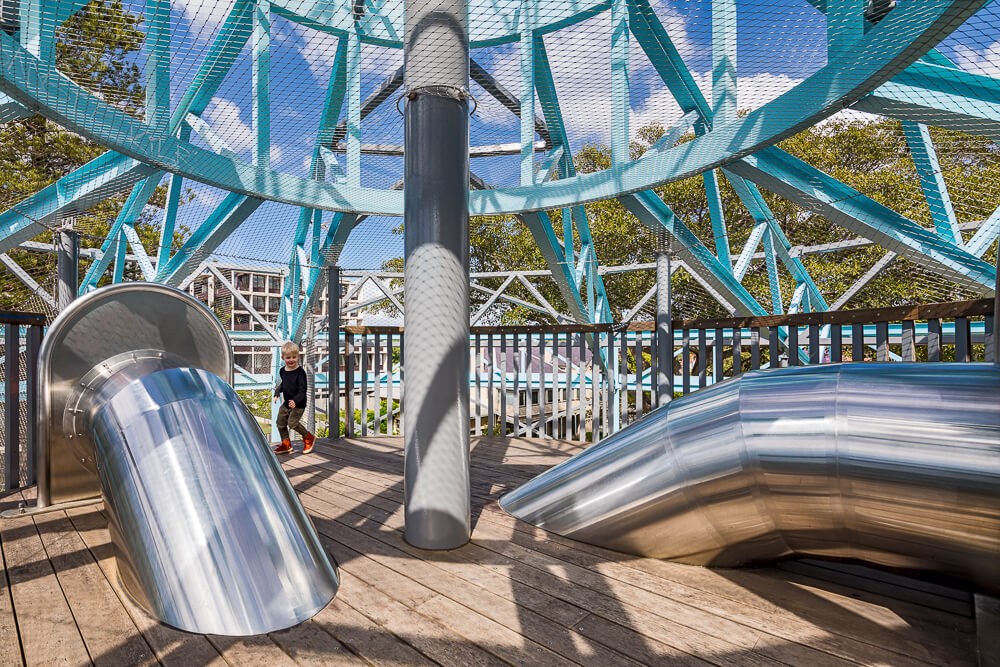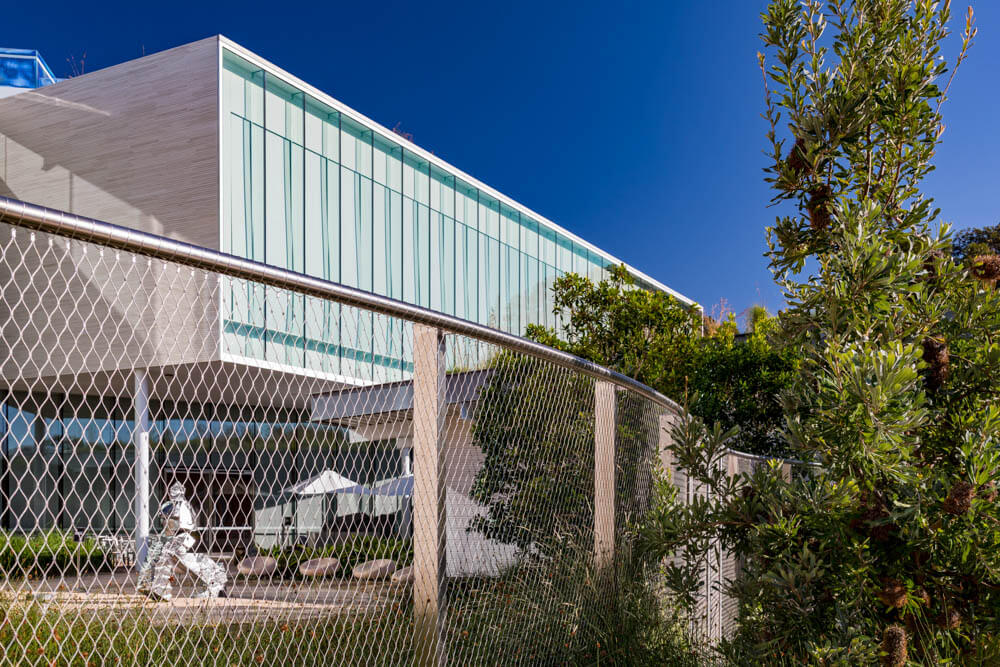-
Australia
Copyright © 2025 Powered by BCI Media Group Pty Ltd
Confirm Submission
Are you sure want to adding all Products to your Library?
Contact Detail
10 Dec 2024 by Tensile Design & Construct

Urban infrastructure evolves all the time as cities grow, demanding innovative design and safety solutions.
Here’s how flexible barriers can contribute to the infrastructure projects of the future.
Fast, safe and sustainable flexible barriers
Flexible barriers prevent falls, climbing and objects being thrown from height.
At Tensile, we use Jakob’s innovative Webnet stainless steel mesh, due to its adaptability for a range of infrastructure projects, including bridges, building atriums, multi-level carparks, elevated walkways and kids’ playgrounds.
Flexible barriers made from Webnet deliver on both safety and aesthetics. Webnet has a light, near transparent appearance that fits seamlessly into the overall design of structures, without obstructing airflow and views. At the same time, Webnet can be configured to meet non-climbability requirements and engineered for large crowd loads.
Webnet has a high degree of malleability, able to drape and conform to different shapes. This makes it ideal for projects with complex needs or non-linear geometric shapes such as curves and twists.
It can also help save time and money on projects. Modular panels can be built off-site and installed with minimal disruption, especially for bridges over main roads and atriums in busy commercial buildings. Being lightweight, Webnet can also save on the amount of material required for barriers.
With the increasingly focus on sustainability in projects, it’s important for flexible barrier materials to be environmentally friendly. Webnet mesh is made from 70% recycled content in facilities that run on renewable energy. It’s robust and durable, lasting decades with very little maintenance. It can also be recycled after dismantling, if required.

The use of Webnet in infrastructure projects
Here are some examples of how these barriers can be used.
Pedestrian and cyclist bridges
Footbridges are one area where Webnet really shines.
Many bridges over roads or watercourses need a flexible barrier. This includes in terms of load bearing, fall protection, integration into the structure and adaptability to non-linear shapes.
The Christopher Cassaniti bridge (formerly Lachlan’s Line) in Sydney has a Webnet anti-throw screen that drapes over the structure and conforms to its twists and turns. The barrier is also transparent, allowing people to cross over in safety while still being able to take in their surroundings and the sculptural forms of the bridge.
Public play equipment
Climbing equipment in kids’ playgrounds requires a robust barrier that won’t impede free play. The barrier also needs to enable parents to be able to see where their children are, and be assured they are safe.
Webnet is ideal for this due to its ability to wrap around structures of all shapes and sizes. The ‘sales ring’ playground at Inglis Park demonstrates this. The Webnet barrier allows kids to climb the platforms in full safety while enjoying the surrounding views from up high.
Public gardens
Webnet makes a great flexible fencing material.
The terraced garden at the Sydney Modern has a curved Webnet barrier that meanders in and out of its spaces. We know of no other material that could match Webnet for flexibility for an installation like this one.
Another example is the elevated garden known as Skypark in Melbourne. The garden and walkway Webnet barriers are rated for maximum crowd loads and for fall protection. They also act as supporting terraces for native climbing plants – demonstrating the versatility of Webnet to serve multiple purposes simultaneously.
Check out the many other infrastructure barrier projects on our website. To discuss flexible barriers further please call us today!




